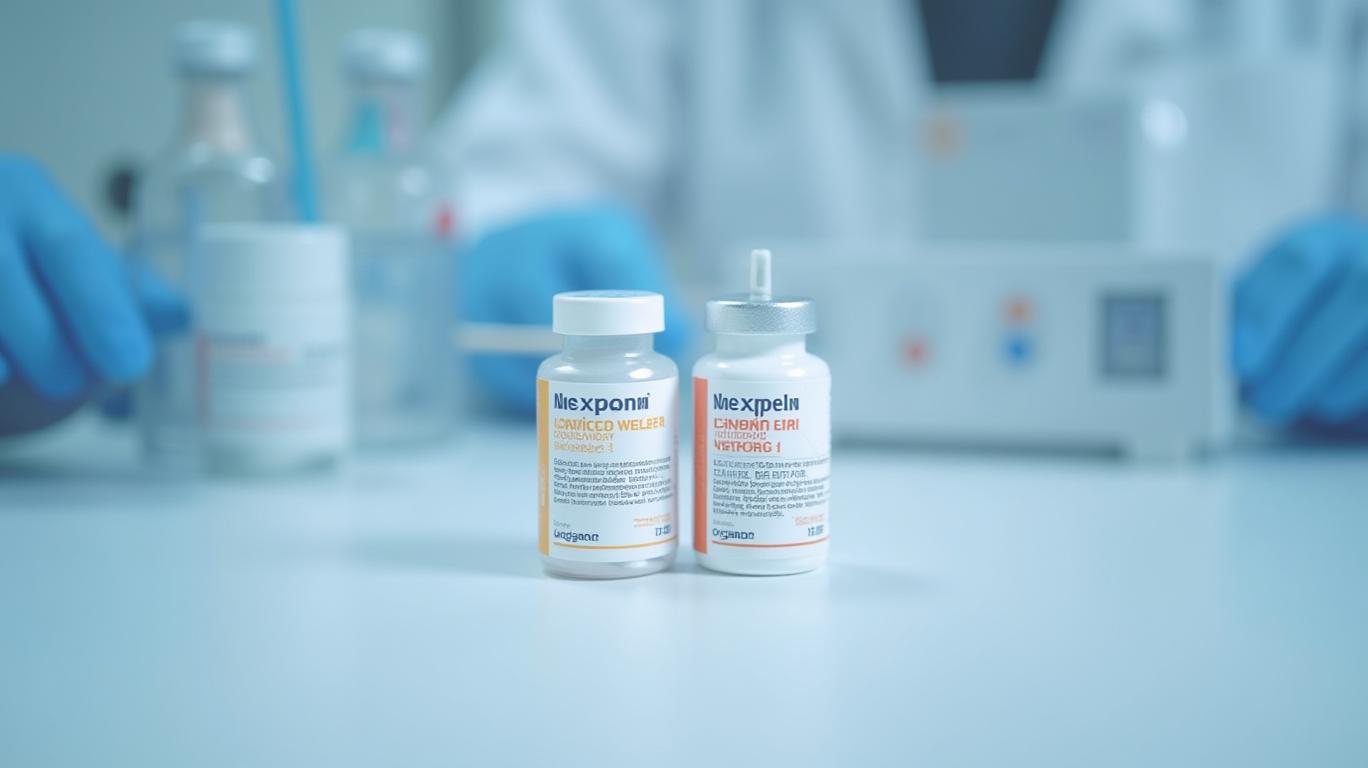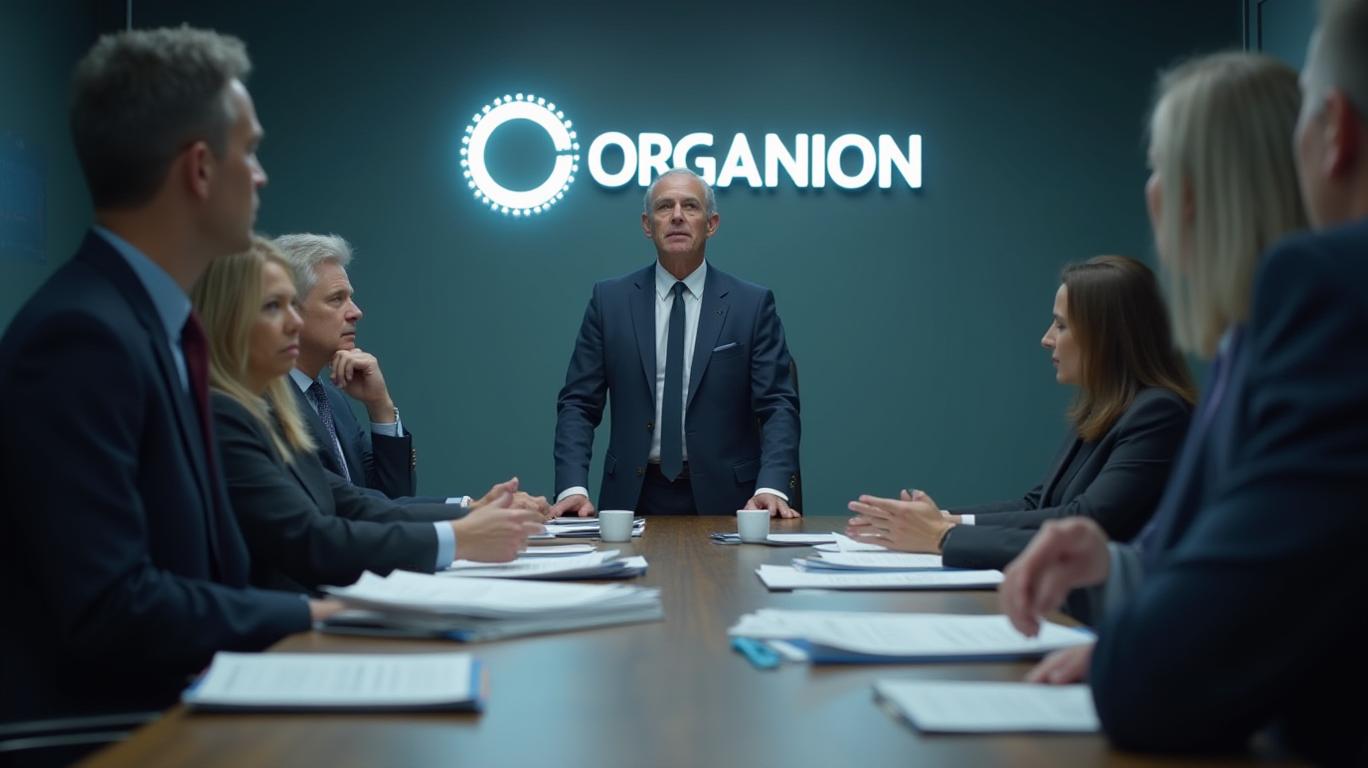Organon's Descent: Can Cost-Cutting Save a Stock in Freefall?
The biopharma sector has seen its share of turbulence in recent years, but few companies have faced such a dramatic reckoning as Organon (OGN). Last month, Bank of America (BofA) slashed its price target for the firm to $10 from $11, a move that sent shares plummeting to record lows. The downgrade underscores a stark reality: Organon is caught between crushing debt, a thinning product pipeline, and a market that’s grown impatient with its struggles. Yet, beneath the gloom lies a question: Is this a dying stock—or a diamond in the rough?

The Immediate Crisis: Debt, Dividends, and Dim Prospects
The catalyst for BofA’s downgrade was Organon’s abrupt decision to slash its quarterly dividend by 90%, from $0.28 to $0.02 per share. CEO Kevin Ali framed the move as a “necessary evil” to deleverage the balance sheet. The company’s net debt stood at $6.8 billion as of Q1 2025, with a debt-to-equity ratio of 18.81, far exceeding industry norms. BofA analyst Jason Gerberry argued that Organon’s focus on reducing leverage to below 4.0x by year-end is critical—but achievable only through drastic measures.
The dividend cut, however, was merely a symptom of deeper problems. BofA highlighted a $200 million revenue headwind in 2025 due to the loss of exclusivity for a major product in Europe, compounded by $150–$180 million in pricing pressures and a $200 million FX headwind. These factors, combined with margin erosion—adjusted gross margins fell to 61.6% in 2024 from 62.7% in 2023—paint a grim near-term picture.
Analysts Are Split: Caution vs. Contrarian Optimism
BofA’s $10 price target now sits below Organon’s current trading price of ~$9.50, but the broader analyst community is a mixed bag. While Morgan Stanley and CFRA also downgraded the stock, GuruFocus estimated a GF Value of $20.72 for OGN in one year, implying an 87% upside from May’s low. This divergence reflects a stark divide:
- Bear Case: BofA and peers emphasize risks like reliance on European manufacturing, exposure to U.S. pharmaceutical tariffs, and a pipeline that’s “light on innovation.” With 2025 revenue projected at just $6.125–6.325 billion, and adjusted EBITDA margins stagnant at 31–32%, there’s little room for error.
- Bull Case: Investors point to Organon’s extremely cheap valuation metrics—a P/E of 3.91 and price-to-cash-flow ratio of 2.1—arguing the stock is priced for default. Key growth drivers like Nexplanar (up 17% in 2024, targeting $1 billion in 2025 revenue) and Vtama could stabilize the core business.
The Turnaround Play: Cost Cuts and Strategic Shifts
Organon’s management is betting on operational discipline to turn the tide. The company aims to save $200 million in 2025 through restructuring and separating manufacturing from its parent, Merck. CEO Ali emphasized that prioritizing debt reduction over shareholder returns is “the right call” to restore liquidity.
Yet, execution is everything. If the cost cuts fail to materialize, or if pricing pressures worsen, Organon could face a liquidity crunch. Conversely, a successful deleveraging effort and sustained growth in Nexplanar could reignite investor confidence.
The Bottom Line: A High-Reward, High-Risk Gamble
Organon’s story is one of extremes. On one hand, its valuation is among the cheapest in the sector, and its free cash flow (targeted at $900 million before one-time costs) offers a potential lifeline. On the other, its debt burden and pipeline limitations are existential threats.
The stock’s 27% plunge to $9.45 in May 2025 underscores the market’s skepticism, but Stocktwits sentiment turned ‘extremely bullish’ as some investors bet on a rebound. GuruFocus’s $20.72 valuation suggests that if Organon can stabilize its balance sheet and capitalize on its core franchises, the upside is massive.
But the path is narrow. A
In the end, Organon’s fate will likely mirror its product pipeline: If its core drugs can sustain growth, the stock could recover. If not, the next chapter may be written in red ink.
Conclusion: Organon’s lowered price target and dividend cut highlight its precarious position, but its valuation and growth assets in Nexplanar and Vtama offer a compelling contrarian thesis. With a price-to-cash-flow ratio of 2.1 and a free cash flow target of $900 million, the company has the tools to rebuild. However, its debt-to-equity ratio of 18.81 and $200 million in headwinds mean failure is not just an option—it’s a real risk. For investors, this is a high-stakes bet on whether Organon can turn its corner before the market loses faith entirely.










